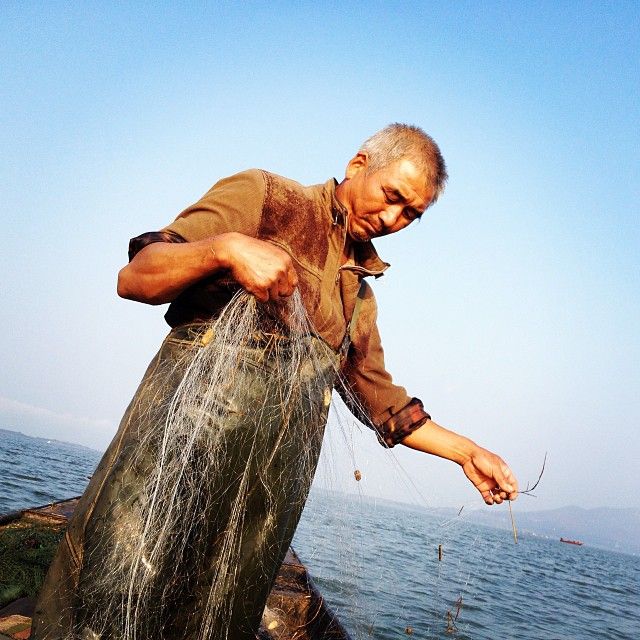Objective:
Students will be able to use details from collaborative discussion and media by journalist Sharron Lovell to evaluate similarities and differences between current water challenges in Flint, MI and China.
Warm-up:
1. Make a list of all of the ways that you use water in one day.
2. Consider the following:
- How would these parts of your life be impacted if your water became contaminated?
- How would these parts of your life be impacted if your city had less water?
3. In small groups, make a list of facts you know about the discovery of lead in the water in Flint Michigan. Share your list with the rest of the class.
4. As a class, discuss the following questions:
- What caused the water challenge that Flint, MI is facing?
- What are the impacts on community members?
- What have been proposed solutions to this problem?
- How would those solutions impact the people living in Flint, MI?
Note: To facilitate this conversation, use a Google search or your local paper to research the latest updates on the water crisis in Flint, MI. Here is an article from Newsela.com , where you can change the lexile level of the text.
Introducing the Lesson:
1. On your own, or in groups, view the videos attached and answer the accompanying questions.
- “Meet the Journalist: Sharon Lovell”
- “Who Will China's Water Transfer Project Leave Behind?”
2. As you watch, also consider the following:
-
What similarities and differences exist between the water challenges facing communities in China and the water challenges facing communities in Flint?
Discussion:
1. Compare the issue explored in journalist-grantee Sharron Lovell’s work with what you’ve been learning about Flint, MI. Discuss the following:
- How are the crises different?
- How are they alike?
2. In both cases, what do you think are the next steps for increasing access to water? Who needs to be involved and what do they need to do? Use evidence from your discussion and from the videos to support your responses.
3. Discuss how each issue relates to you and your class personally. With your class, create a list of reasons that it is important for your community to know about these two issues.
4. Discuss the structure that Sharron Lovell used to create her documentary. Consider the following:
- What parts of the documentary did you connect with the most?
- What details from the documentary do you think would be most important for people to know?
- How do you think Sharron determined the order for the films? How were the films structured and what was their impact?
Extension Activities:
Option 1: Write a short essay comparing and contrasting the water challenge in China with the water challenge in Flint.
After viewing both videos and answering the questions, create two Venn diagrams. Each diagram should compare one of the following elements of the water challenges in China and Flint, MI:
- Causes of the water crisis
- Impacts of the water crisis
Write an essay that uses details from your discussion and the films you viewed to analyze the similarities and differences between these crises.
Option 2: Research how the governments of China and the United States are responding to these water issues. Using details from your research, prepare a presentation evaluating the responses of both nations to the water crises their communities are facing.
Option 3: Using Sharron’s documentary as a model, design an outline for a short documentary covering the water crisis in Flint, MI. Your outline should explain what information would be presented in the film and in what order. Consider the following as you create your outline:
- What were the most important and powerful elements of Sharron’s documentary? (interviews, facts, images, etc.)
- What do you think was the purpose of her documentary? What would be the purpose of your documentary?
- What elements would you want to include in a documentary about the water crisis in Flint, MI?
- What information do you still need to research? How would you research it?
- How can you present an outline for your documentary in a way that is clear and effectively communicates your vision for your film?
The following lesson plan and classroom resources ask students to compare the water crisis facing Flint, Michigan to a different water crisis in China. Students use digital resources from journalist-grantee Sharron Lovell to investigate the impacts of China’s Water Transfer Project on communities in northern and southern China. Students then practice cooperative learning and writing skills as they compare the impact of this project in China to how the discovery of lead in Flint’s water has impacted community members in Flint, Michigan.
CCSS.ELA-LITERACY.RI.8.3
Analyze how a text makes connections among and distinctions between individuals, ideas, or events (e.g., through comparisons, analogies, or categories).
CCSS.ELA-LITERACY.RI.8.1
Cite the textual evidence that most strongly supports an analysis of what the text says explicitly as well as inferences drawn from the text.
Lesson facilitation notes:
1. The lesson plan is written for students to be able to explore the resources and reflection exercises independently.
2. Students may need to have an extra sheet of paper, or a blank online document open, to answer the warm up, comprehension and extension questions.
3. The lesson lists several extension exercises. Students could choose one or work through all of the listed exercises.
4. The warm up and post-reading reflections in this lesson could also lead to rich conversations. You may want to work through the lesson along with the students and denote moments for interactive activities.
5. This lesson can be sent to students electronically by clicking "share" once it is published. From the electronic lessons, students can access the Pulitzer Center reporting by clicking on the links under "Resources". When printing the lesson, the text from the resources will print after the student instructions.
6. With questions about this lesson, contact [email protected]



